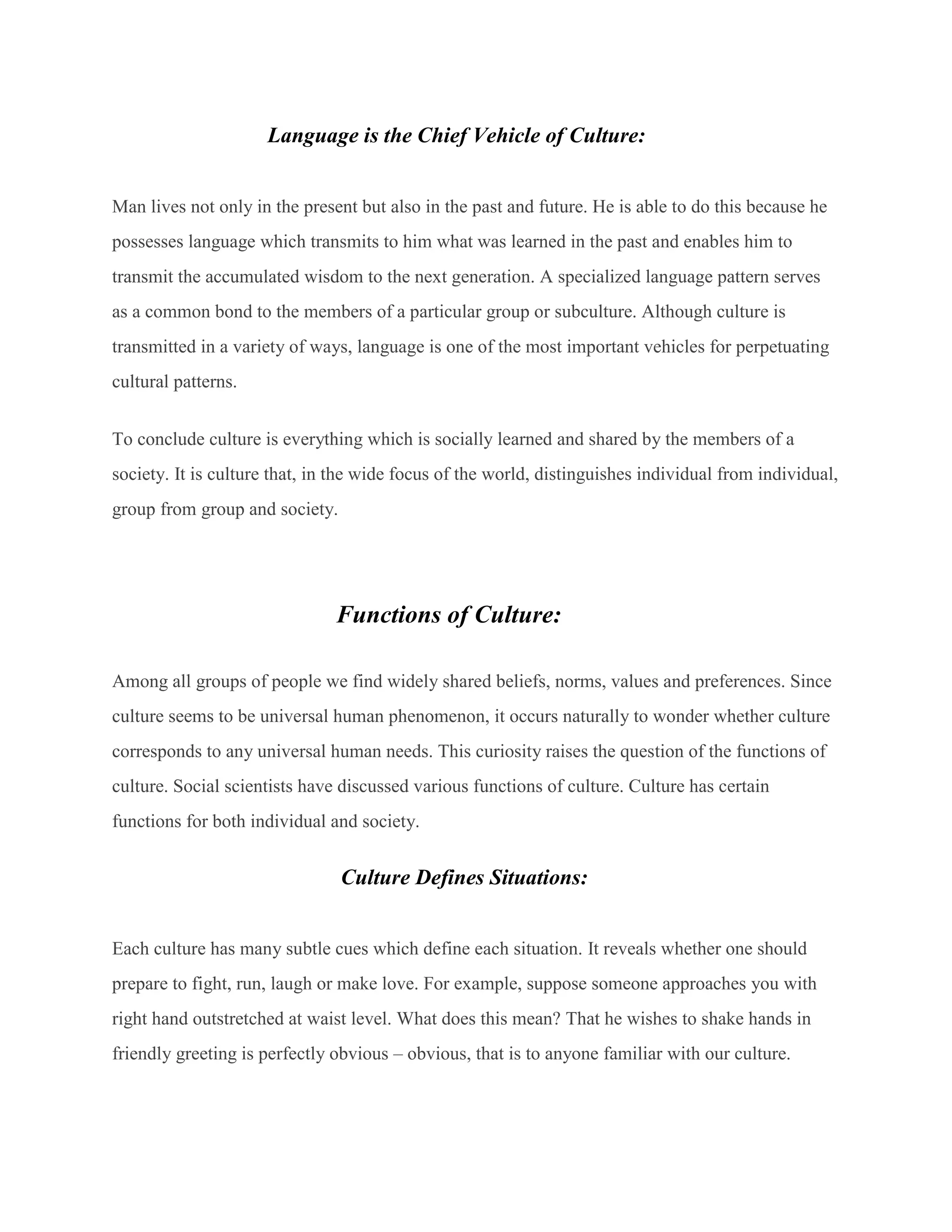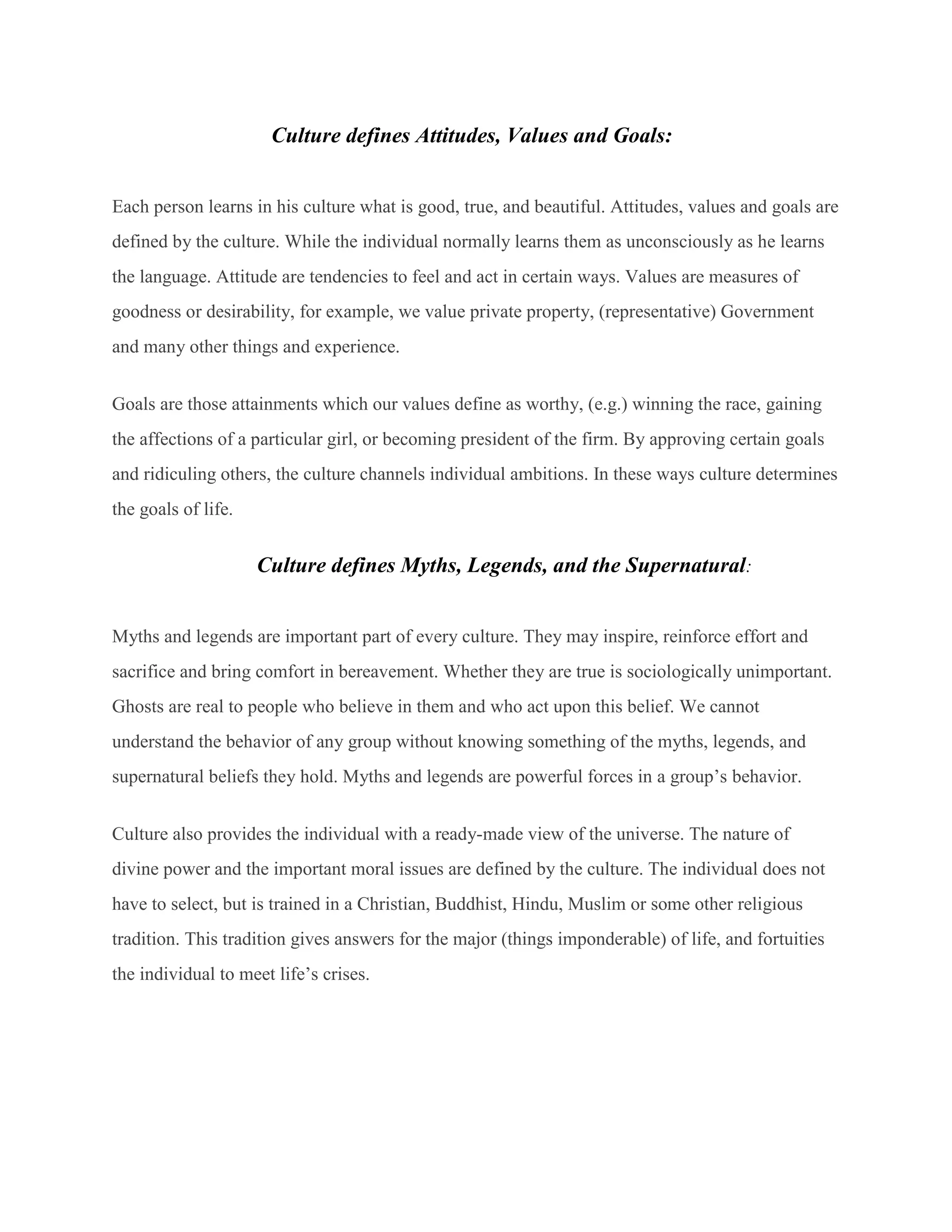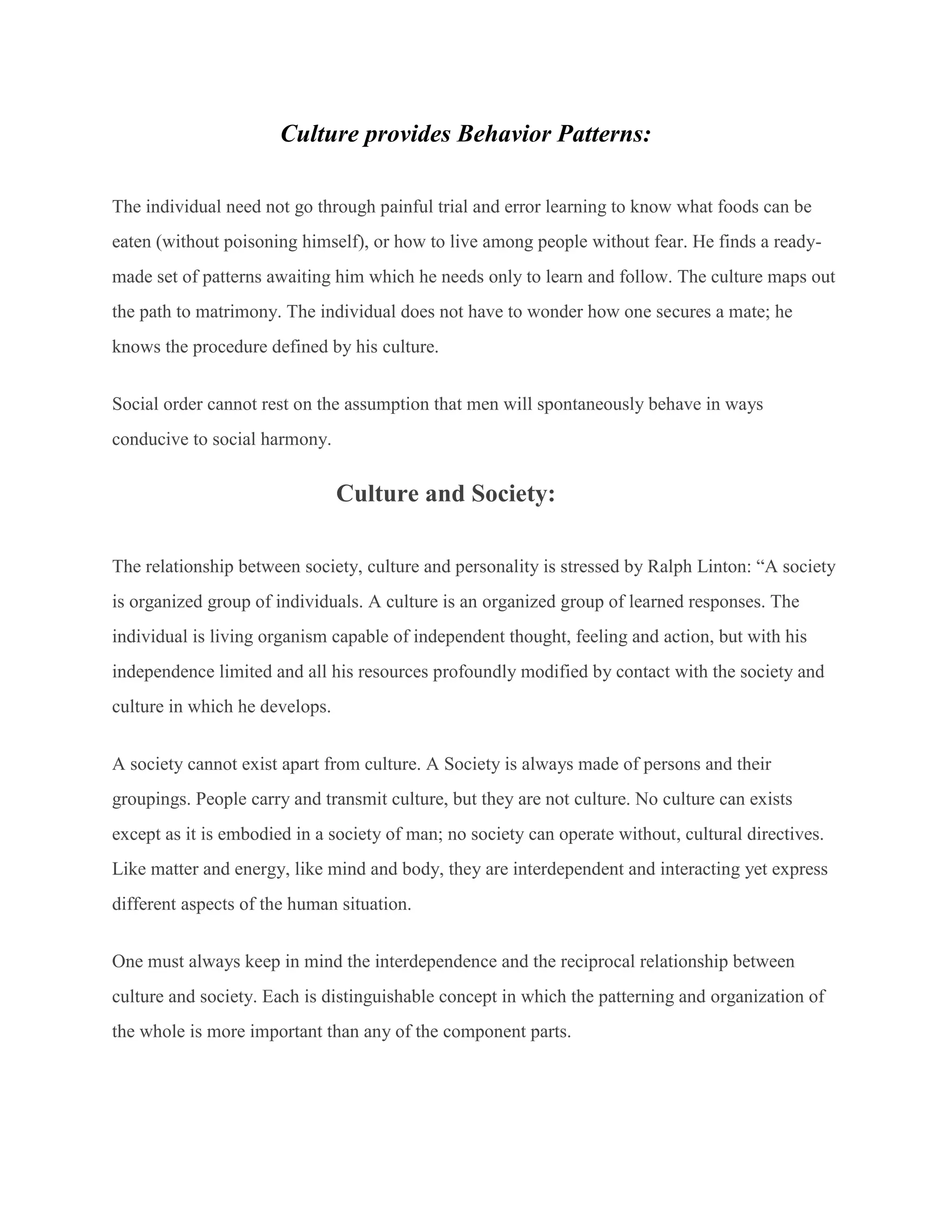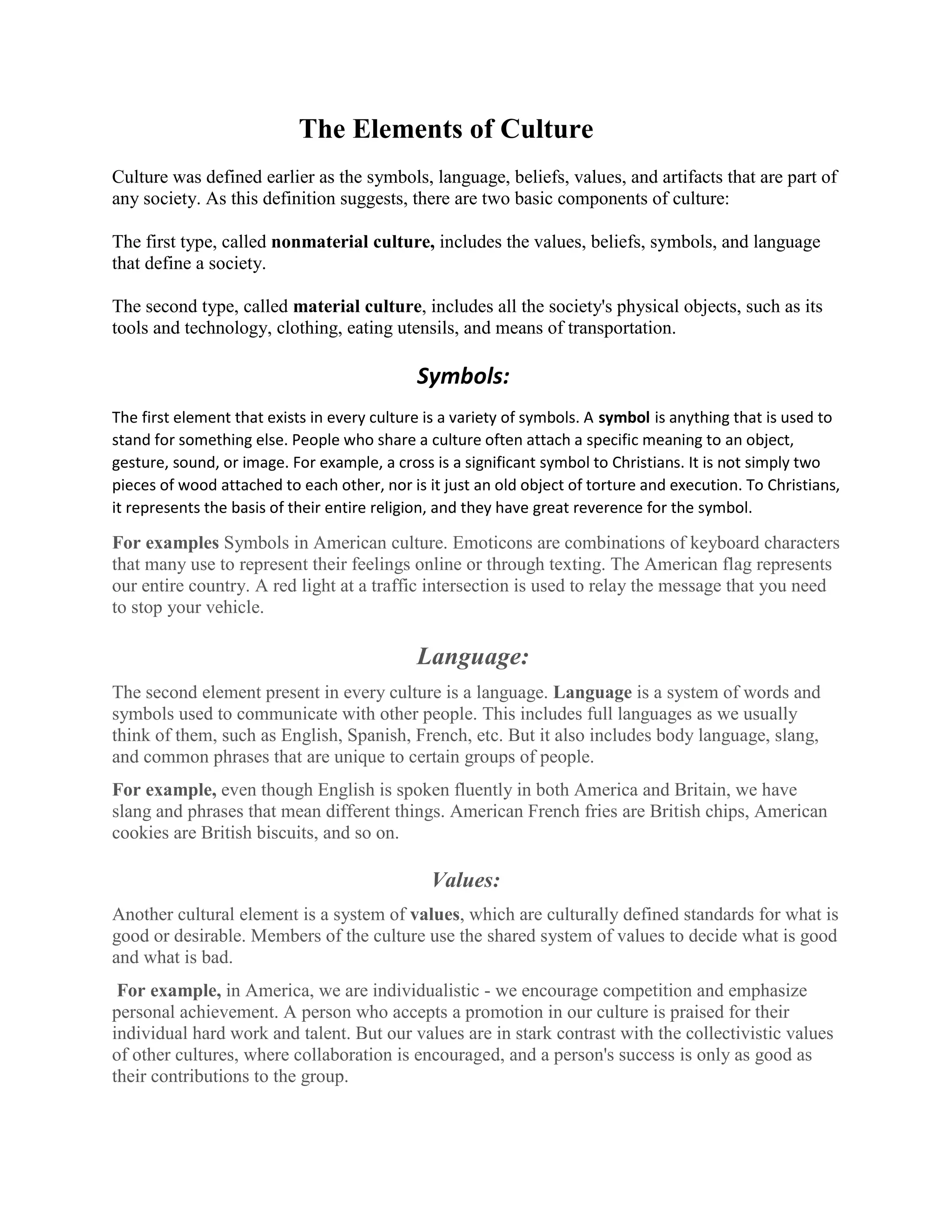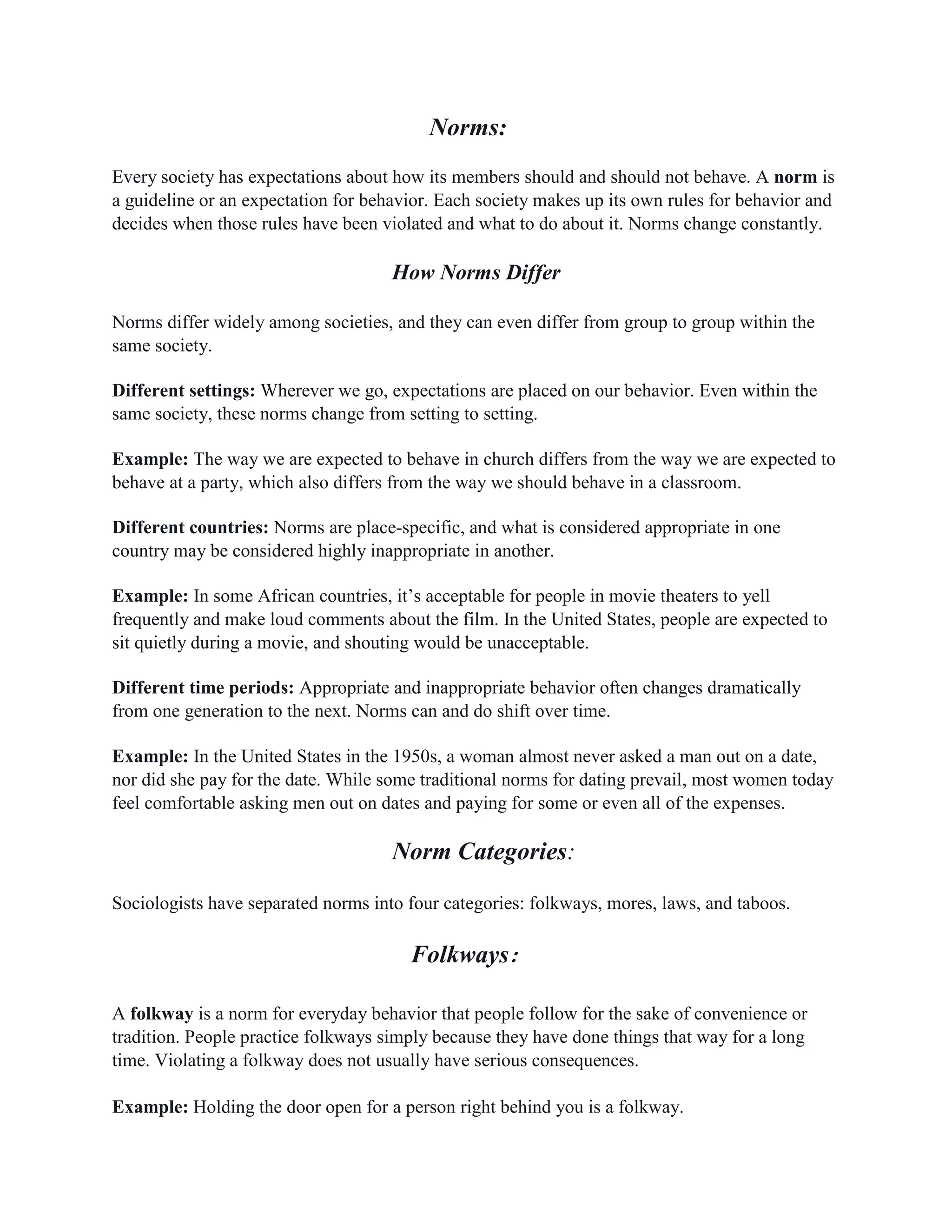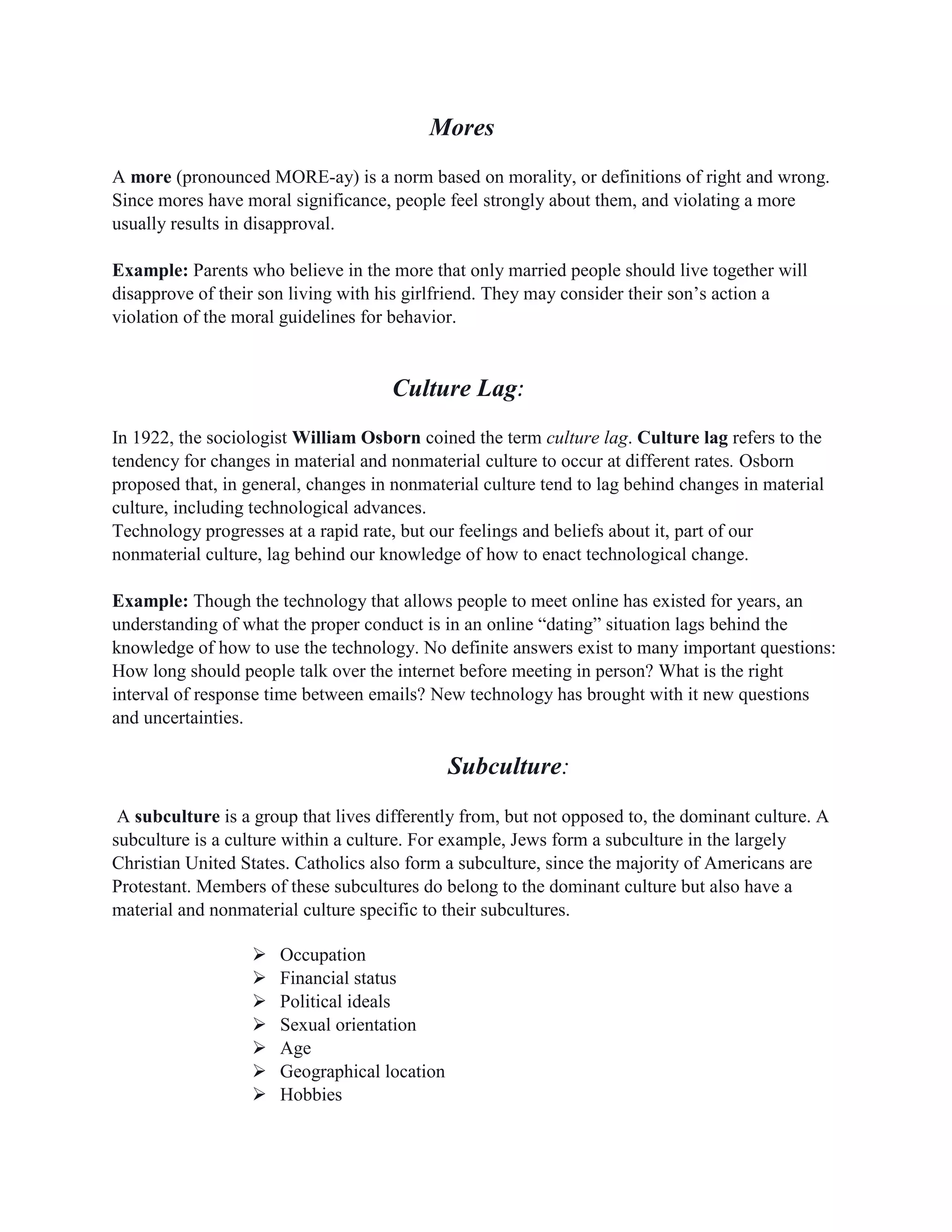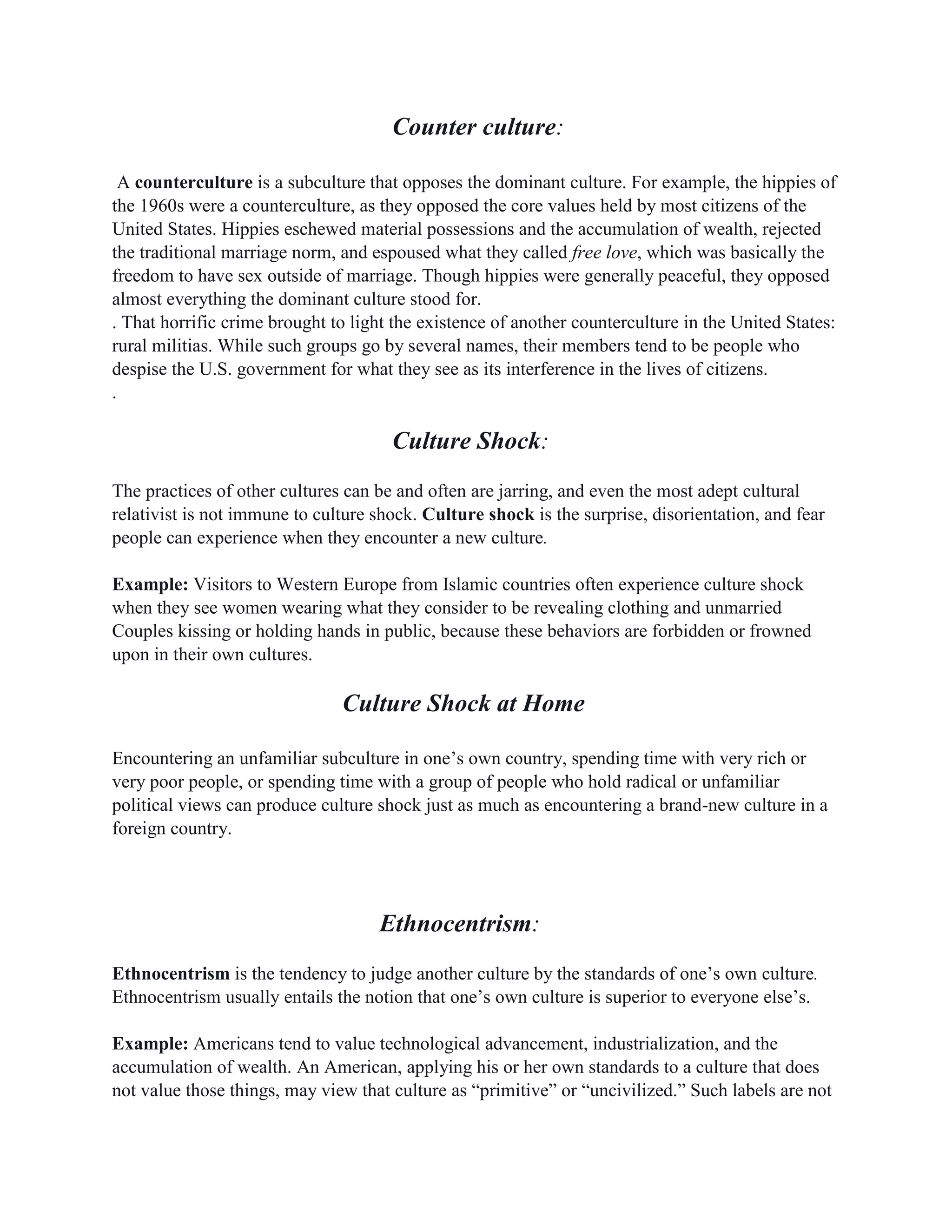The document explores the multifaceted concept of culture, defining it as the shared behaviors, beliefs, and practices of a group, and noting its importance in shaping human experience. It highlights various definitions by notable anthropologists, emphasizing that culture is learned, pervasive, and integral to both individual identity and social order. Moreover, the document describes how culture functions to provide individuals with behavior patterns, define societal values, and shape common myths, illustrating its dynamic nature and interplay with society.
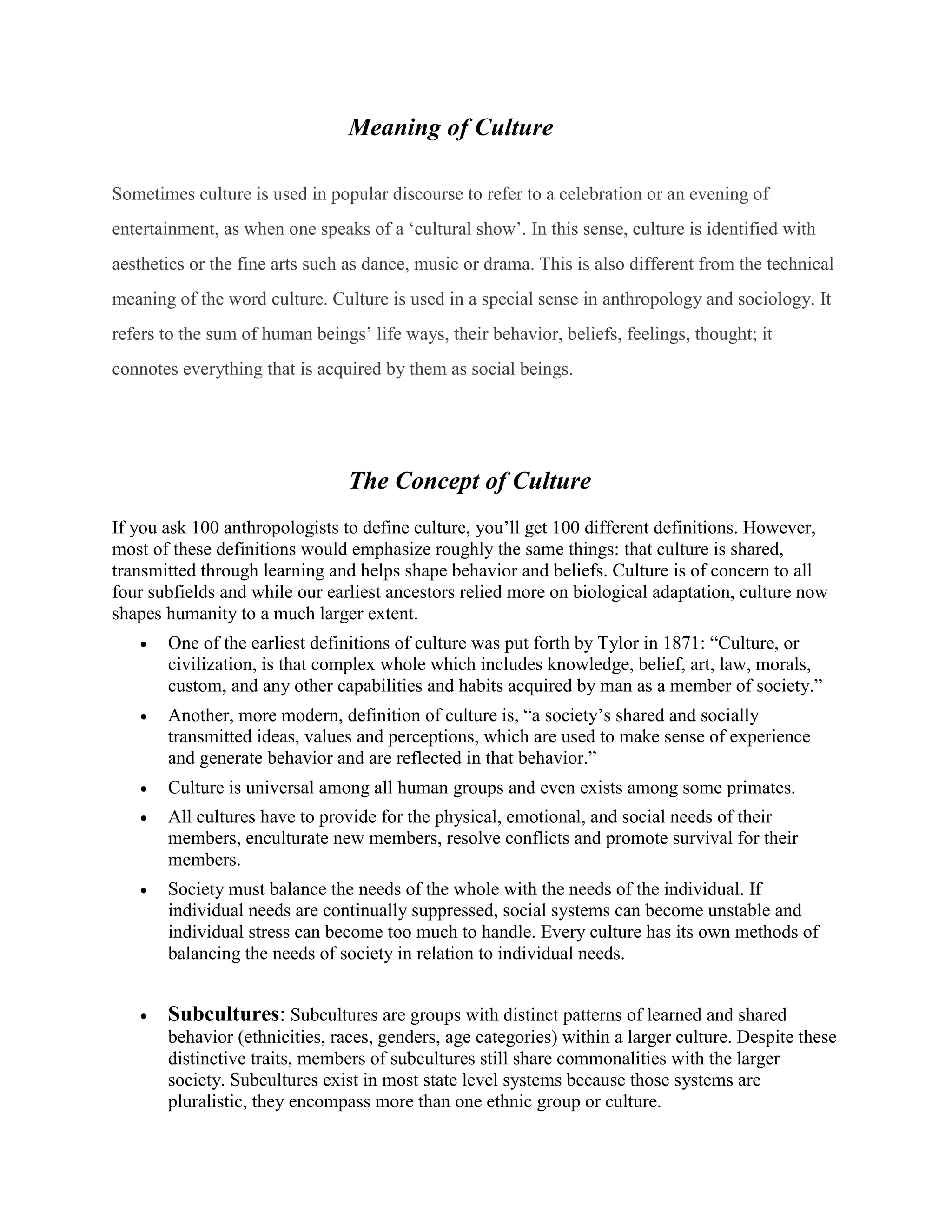

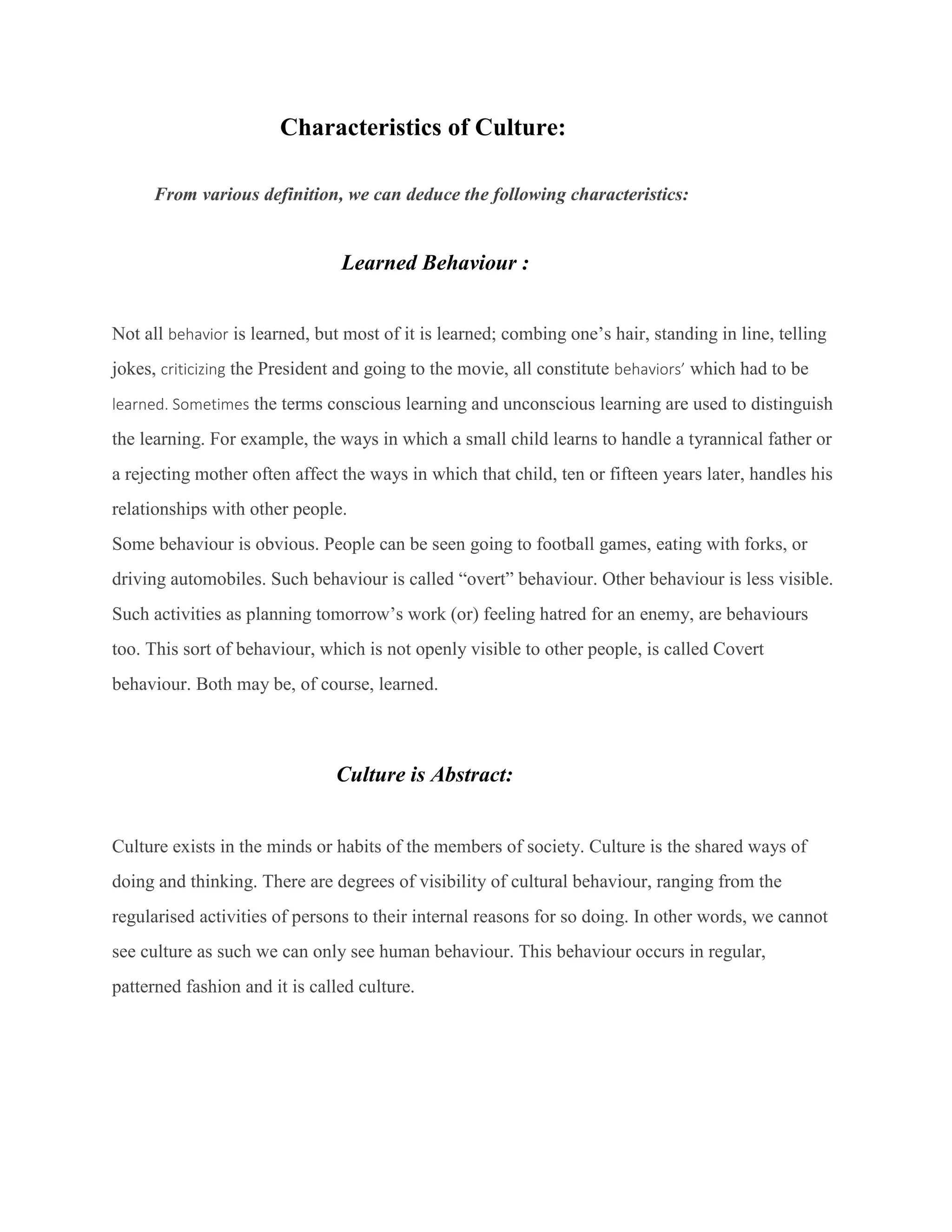
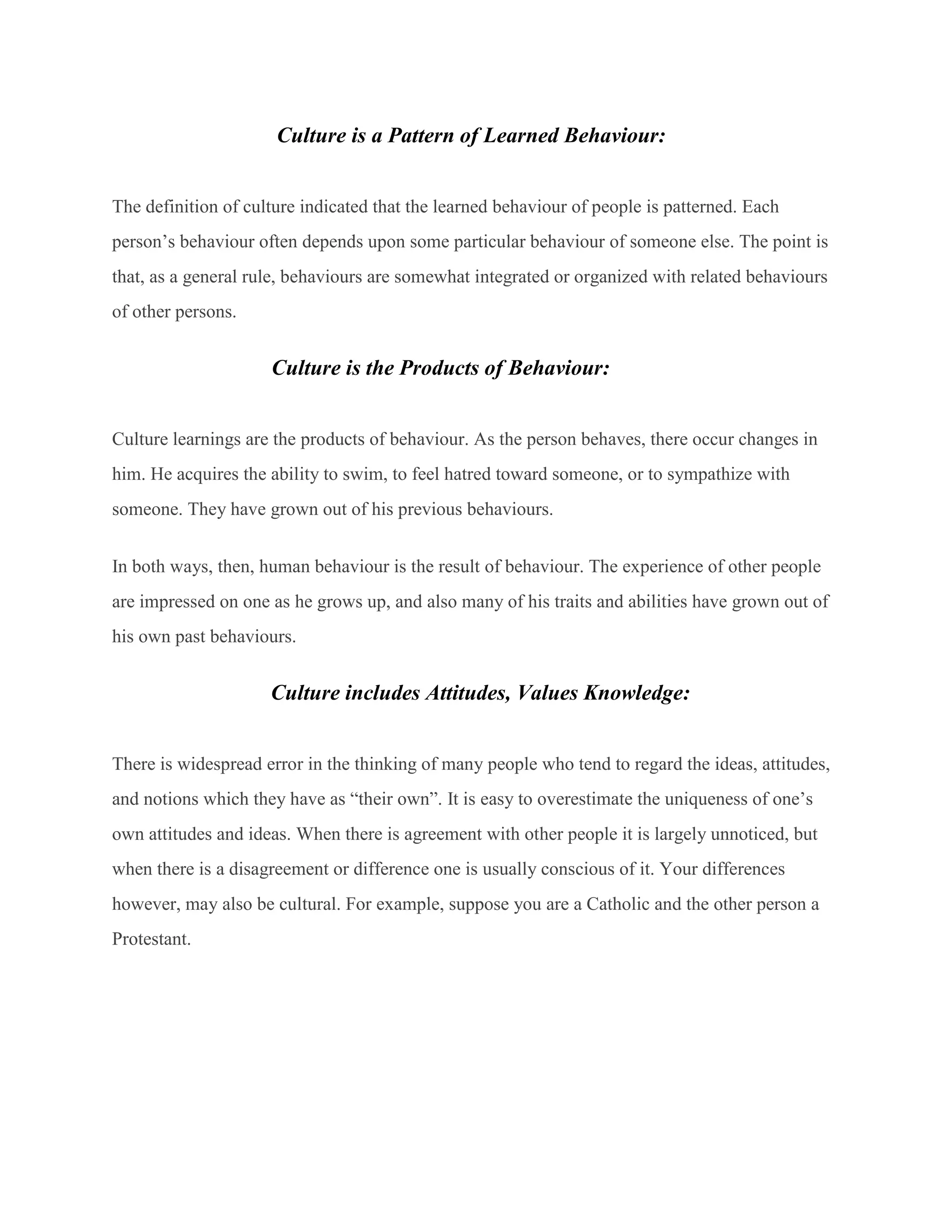
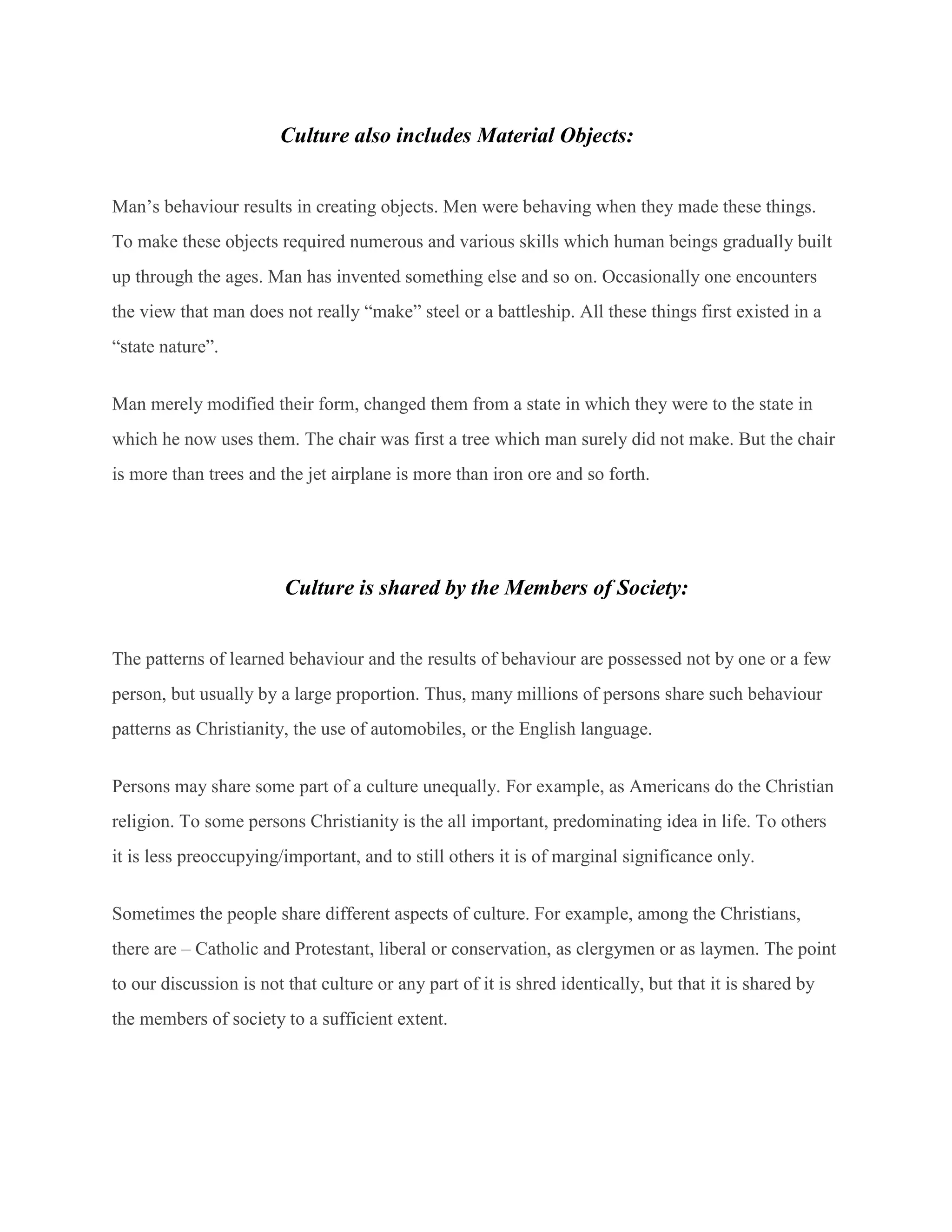
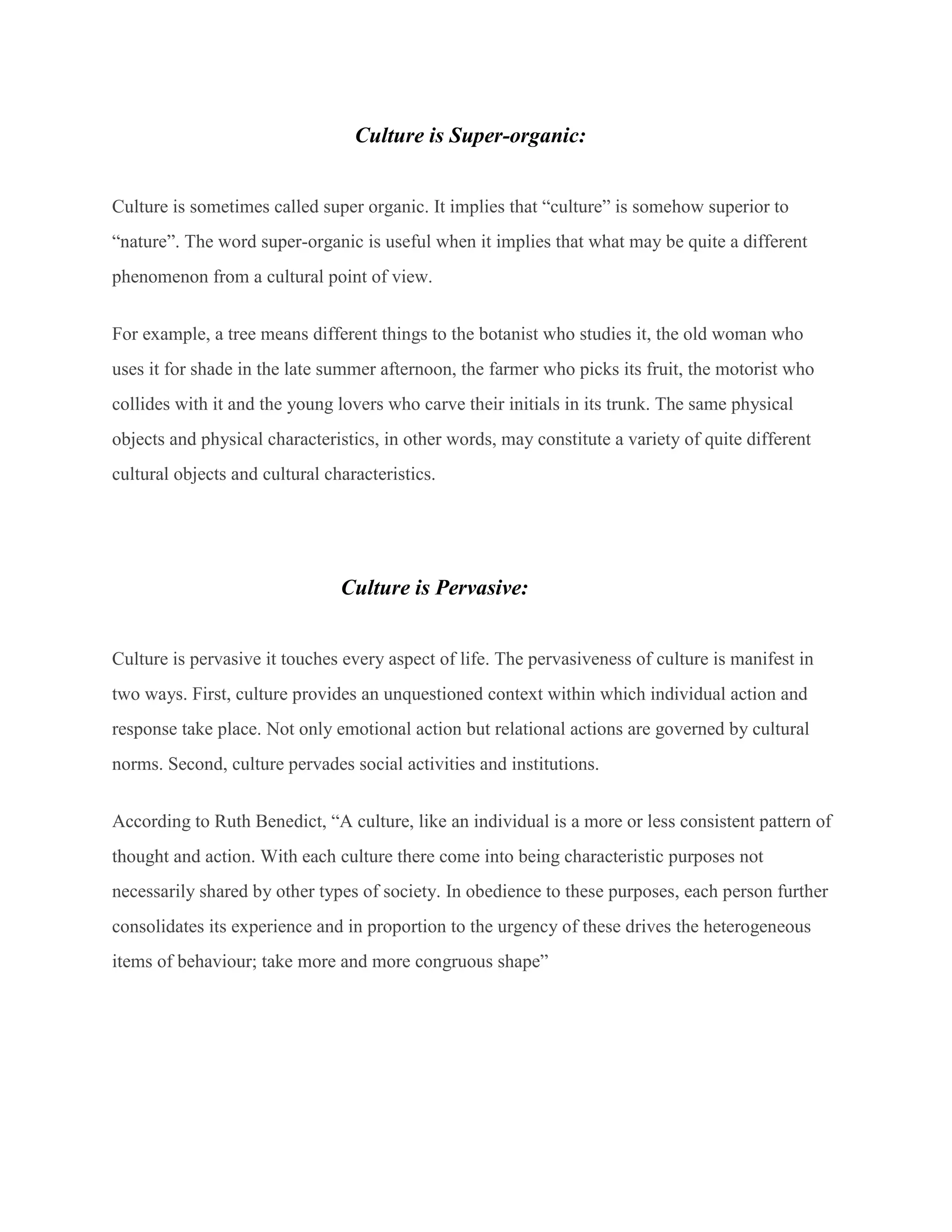
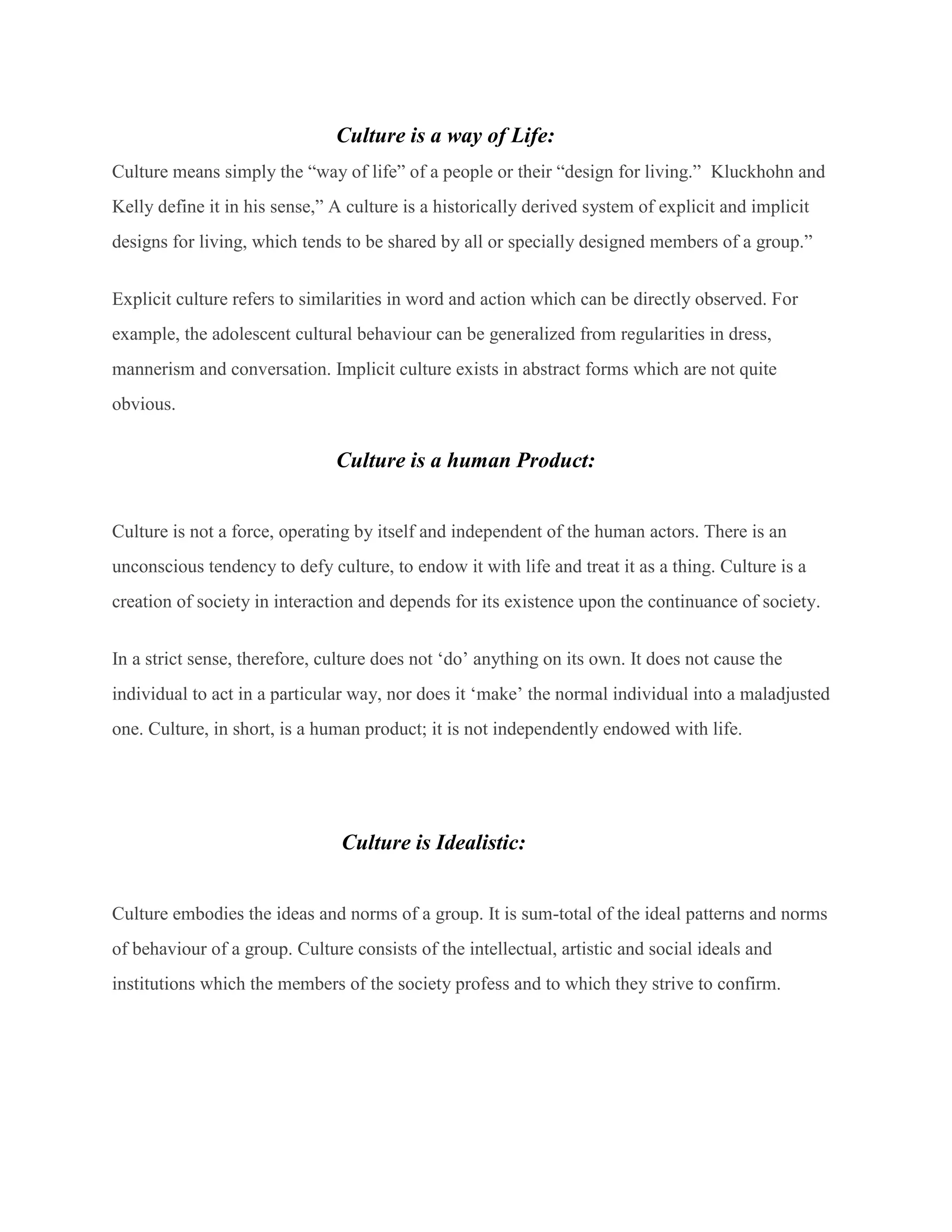
![Culture is transmitted among members of Society:
The cultural ways are learned by persons from persons. Many of them are “handed down” by
one’s elders, by parents, teachers, and others [of a somewhat older generation]. Other cultural
behaviors’ are “handed up” to elders. Some of the transmission of culture is among
contemporaries.
For example, the styles of dress, political views, and the use of recent labor saving devices. One
does not acquire a behavior pattern spontaneously. He learns it. That means that someone teaches
him and he learns. Much of the learning process both for the teacher and the learner is quite
unconscious, unintentional, or accidental.
Culture is Continually Changing:
There is one fundamental and inescapable attribute (special quality) of culture, the fact of
unending change. Some societies at sometimes change slowly, and hence in comparison to other
societies seem not to be changing at all. But they are changing, even though not obviously so.
Culture is Variable:
Culture varies from society to society, group to group. Hence, we say culture of India or
England. Further culture varies from group to group within the same society. There are
subcultures within a culture. Cluster of patterns which are both related to general culture of the
society and yet distinguishable from it are called subcultures.
Culture is an integrated system:
Culture possesses an order and system. Its various parts are integrated with each other and any
new element which is introduced is also integrated.](https://image.slidesharecdn.com/assignmentonculture-150915044729-lva1-app6891/75/Assignment-on-culture-8-2048.jpg)
